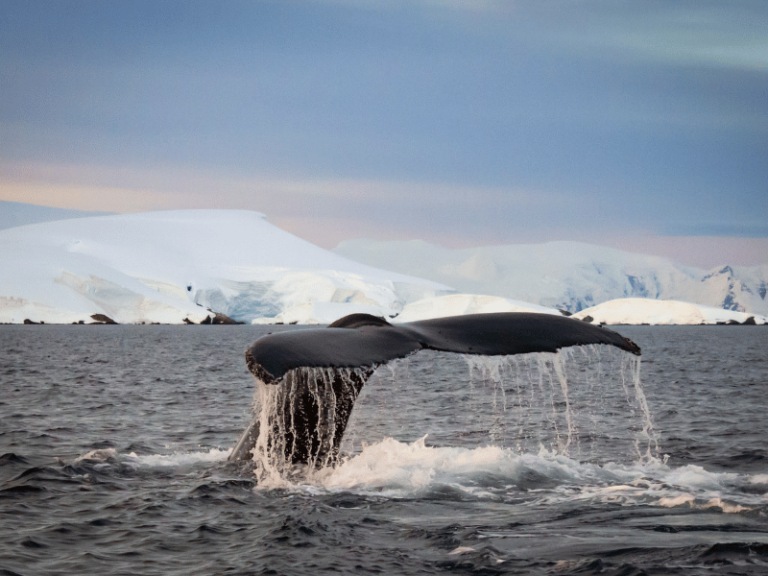Many animals change their habitats with the seasons, and whales that live in the ocean year-round are no exception. Every spring, they travel with their calves to the distant Antarctic; and as autumn arrives in the Southern Hemisphere, they turn back from there. This migration happens every year.
Why do whales undertake such continuous migrations? It’s due to changes in their living environment.
Whales are the largest animals in the world and have large appetites. Many huge whales, like blue whales and fin whales, consume several tons of krill (a small red crustacean) daily, and only the Antarctic, which abounds in these tiny krill, can satisfy their enormous appetites.
Antarctica is a world of ice and snow. Because of its extreme cold, there are hardly any animals or plants on the Antarctic continent itself. However, the surrounding oceans of Antarctica are different. In spring, conditions here are particularly suitable for the reproduction of small algae—phytoplankton. These phytoplankton provide the conditions for the reproduction of zooplankton—such as krill—which specialize in feeding on phytoplankton.
In spring, these planktonic organisms often multiply so abundantly that they can change the color of the seawater. A member of an Antarctic whaling team once described this interesting situation in an article:
“… We approached a group of icebergs. Before us appeared vast stretches of seaweed and plankton, extending for kilometers, coloring the seawater green and red … Giant whales leisurely drink this nutrient-rich ‘soup’ here …”
However, come autumn, as the Antarctic temperatures gradually drop, these small algae begin to wither in large numbers, and the krill also begin to die off. At this time, ice starts forming widely on the surface of the Antarctic seas. As living conditions deteriorate, the well-fed whales must leave the Antarctic oceans one after another and migrate northward to other oceans.

